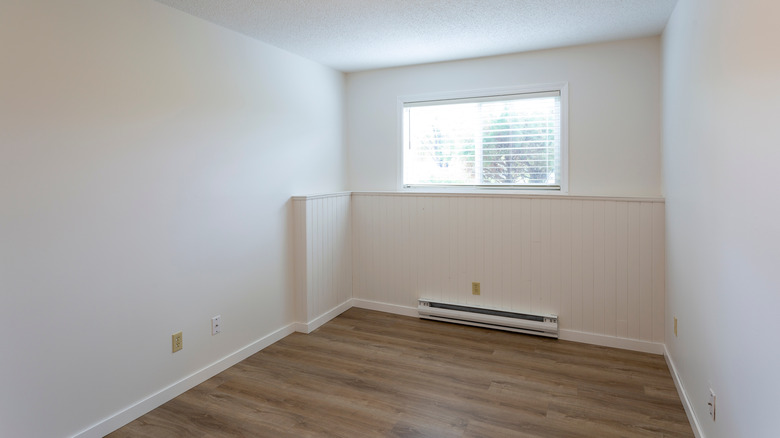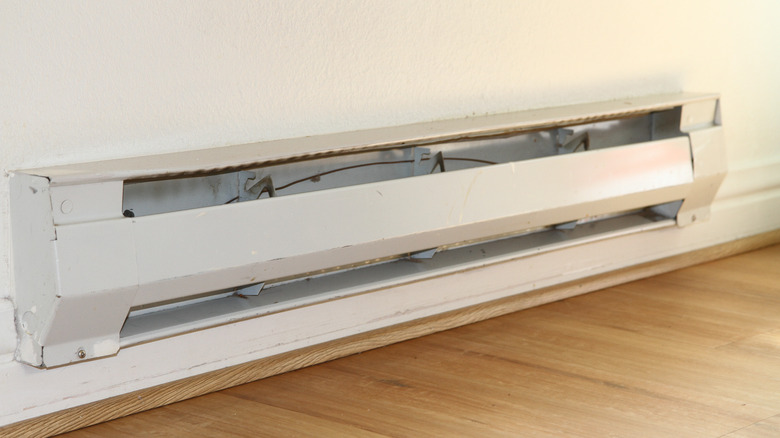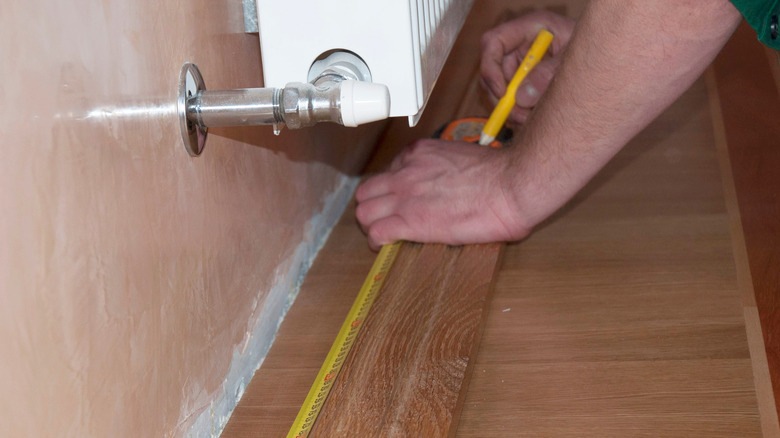Don't Cover Your Baseboard Heaters Just Yet - It's More Dangerous Than You Think
You'll find tons of baseboard heater covers available for purchase online. As such, you might be tempted to purchase one to cover up your unsightly household heating system. They do work but what many may not realize is that they're made for hot water (or sometimes oil) hydronic baseboard heaters. It's outright dangerous to cover electric baseboard heaters with them. Why? Many of these covers are made from durable metals like galvanized steel or aluminum, which efficiently hold heat (though some modern covers are now crafted using composite polymer). Hydronic baseboard heaters don't get as hot as their electric counterparts, meaning the cover stays relatively cool, too. On the other hand, the cover on an electric baseboard heater gets hot, reaching 150 to 200 degrees Fahrenheit. This could burn someone or potentially cause a fire if, say, a plushie leans against the heater for too long.
First, determine which type of baseboard heater you have: Hot water hydronic or electric (aka convection). Shockingly, the difference between them is something people don't even consider before installing baseboard heaters. From the outside, they look unnervingly similar. However, there are significant mechanical differences; the systems don't operate similarly at all. Electric baseboard heaters pull cool air through a vent at the bottom of the unit, push it up overheated elements, and out into the room. A hydronic system is fitted with tubes through which hot water, or sometimes oil, is piped, passively heating a room through radiation.
Cover options for electric baseboard heaters do exist
Does your home already have an oil- or gas-powered boiler for heating hot water and running other systems? If yes, you probably have hydronic baseboard heaters. They run off the same system as those other appliances. If you really can't figure out which type of heaters are mounted to your walls, book a consultation with a heating and cooling professional. They'll probably have to visit your home and inspect your system, but photos or videos might suffice.
Baseboard heaters, whether electric or hydronic, aren't as popular in new builds as they once were, so you're probably living in an old house. The ideal, and no doubt costly in both time and money, answer to whether or not to cover your electric baseboard heaters is to replace them with a more efficient system. Perhaps you can tie the task in with a broader home renovation? If that isn't possible, you can always paint the heater using heat-resistant paint. We recommend Rust-Oleum high heat flat white spray paint, which is $6.98 a can at Home Depot.
Alternatively, covers designed for electric baseboard heaters also exist, though they're harder to come by than covers for hydronic baseboard heaters. The main difference with electric baseboard heater covers is that they don't restrict the airflow essential for convection to reduce fire risk. Walmart sells a Baseboarders Premium 2-foot slip-on electric baseboard heater cover in white for $59.05. Get a 6-foot-long DEMI baseboard cover for $124.95 from Vent+Cover.
Hydronic baseboard heaters are easier to disguise
When shopping for the cover, check the product listing carefully. Most will explicitly state which type of heater they're designed for. If you can't find that information, clear your shopping cart! It's not worth the risk in the long run. Likewise, don't DIY the job if you choose to go the cover route and the instructions require you to remove the heater's end caps. These end caps contain the electrical componentry and shouldn't be tampered with unless you know what you're doing. And don't forget that cleaning baseboard heaters before re-covering them is an imperative step in this renovation process.
Unlike their electricity-powered counterparts, hydronic baseboard heaters are easy to cover yourself. The slip-on options are endless. First, measure your heater. A standard-sized cover will work if it's no more than 6.5 inches tall (unit only), 3 inches from the wall to the heating tube, and 7 inches from the floor to the top of the heater. Once the cover arrives, remove the end caps, snap the cover into place, and then replace them. Simple! Alternatively, as with electric baseboard heaters, you can paint the existing exterior. Hydronic baseboard heaters don't get that hot, so using a primer and acrylic paint designed for metal is fine. You could even DIY wooden covers, though there's some debate over whether they limit the heater's efficiency. You definitely don't want to make these for electric baseboard heaters, though!



